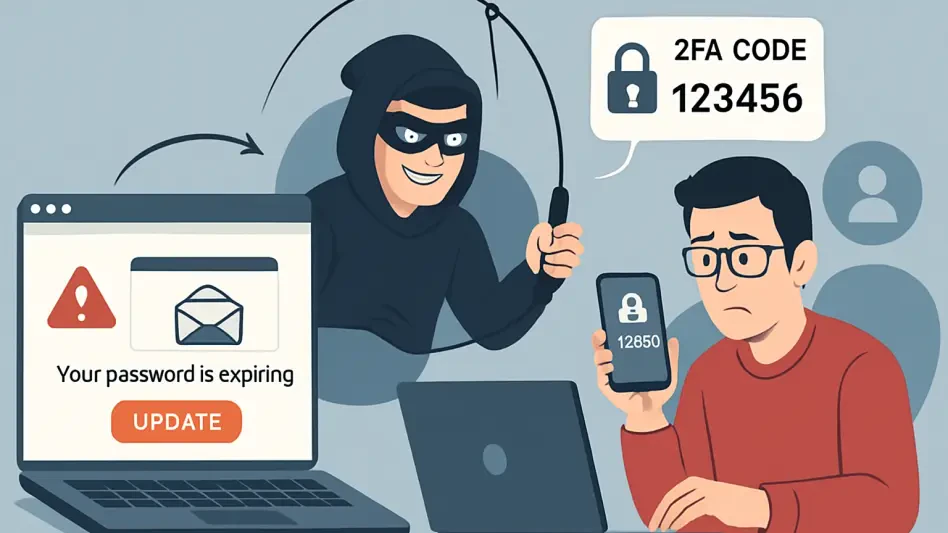In the ever-evolving landscape of cybersecurity threats, a new adversary has emerged: PupkinStealer malware, a sophisticated tool developed using the .NET framework in C#. First identified in April 2025, this nefarious software underscores the growing trend of highly specialized cyber threats designed with precision to extract sensitive user data. Unlike many of its predecessors, PupkinStealer is not a broad-spectrum threat but instead focuses on specific targets, including browser credentials, desktop files, sessions from popular messaging applications, and even screenshots. This targeted approach illustrates a broader theme in modern cyber threat landscapes, where attackers seek efficiency and effectiveness rather than widespread chaos. By honing in on high-value data points, PupkinStealer sets itself apart and exemplifies the meticulous nature of contemporary cyber threats.
Leveraging Legitimate Platforms
PupkinStealer’s modus operandi involves exploiting legitimate platforms for illicit purposes, a tactic that has gained traction among cybercriminals. This malware specifically leverages Telegram’s Bot API for its command-and-control operations, capitalizing on the platform’s robust features that unwittingly serve malicious actors. The use of Telegram is born out of the platform’s ability to offer a degree of anonymity and simplicity that cybercriminals find invaluable. The developer behind PupkinStealer, known under the moniker “Ardent,” aligns with a broader trend among cybercriminals who favor Telegram for orchestrating their campaigns. This trend underscores a significant shift in cybercrime strategies, where the line between legitimate and illegitimate uses of popular platforms becomes increasingly blurred. By integrating their operations into known services with extensive user bases, malware developers can mask their activities amid legitimate traffic, complicating detection efforts by cybersecurity professionals.
Rapid Data Harvesting
A hallmark of PupkinStealer is its ability to swiftly harvest data with minimal obfuscation, a characteristic that emphasizes speed over stealth. The malware targets a selection of popular Chromium-based web browsers, including Google Chrome, Microsoft Edge, Opera, Opera GX, and Vivaldi, leveraging the Windows Data Protection API to decrypt stored passwords and extract critical credentials. This approach allows the malware to rapidly access sensitive information necessary for further malicious endeavors. In addition to browser data, PupkinStealer also scans the victim’s desktop to identify and exfiltrate files with specific extensions, such as .pdf, .txt, .sql, .jpg, and .png. This selective file targeting underscores the malware’s intent to extract highly valuable files swiftly and efficiently. By prioritizing quick data extraction with low resource consumption, PupkinStealer ensures it can achieve its objectives with minimal chance of being noticed by traditional security defenses.
Compromising Messaging Apps
PupkinStealer extends its reach beyond browsers to compromise popular messaging applications, thereby expanding its data collection capabilities. One of its key features is the ability to steal Telegram session data by copying the tdata folder, which contains crucial session files. This allows an attacker to access victim accounts without needing their credentials, posing a significant threat to user privacy and security. Discord, another widely used messaging platform, is also targeted by PupkinStealer, as it extracts authentication tokens from the leveldb directories. This enables attackers to impersonate victims, further magnifying their threat potential. In addition to accessing accounts, PupkinStealer captures high-resolution screenshots of victim desktops, storing these images for potential exploitation. The combination of session hijacking and visual data extraction highlights PupkinStealer’s multifaceted approach to data theft, posing a comprehensive threat to user data integrity and privacy.
Technical Analysis
A technical investigation into PupkinStealer reveals its structure as a 32-bit GUI-based executable compatible with both x86 and x64 Windows environments. By employing the Costura library, the malware efficiently embeds compressed DLLs, achieving a high entropy value in its .text section. This complexity in architecture aids in its execution, where the .NET runtime initializes its operations and calls its Main() method, orchestrating a series of asynchronous tasks for data collection. These tasks include the extraction of browser credentials, categorized under classes such as ChromiumPasswords, which create temporary text files for decryption processes. The FunctionsForStealer and FunctionsForDecrypt classes retrieve decryption keys from Local State files, while methods like GrabberDesktop locate and copy desktop files with designated extensions. Additionally, modules designed for Telegram and Discord ensure session data exfiltration, enhancing the malware’s capability. With sophisticated screenshot capturing and compression routines, PupkinStealer compresses stolen data into ZIP archives, exploiting Telegram bots for data exfiltration.
Mitigation Strategies
PupkinStealer’s operating technique exploits legitimate online platforms for nefarious activities, reflecting a growing trend in cybercrime. This malware adeptly misuses Telegram’s Bot API for its command-and-control processes, taking advantage of the platform’s extensive features that inadvertently cater to malicious users. Telegram’s allure for cybercriminals stems from its capacity to provide anonymity and ease of use, elements crucial for covert operations. The individual behind PupkinStealer, identified as “Ardent,” is part of a broader group of cybercriminals who prefer Telegram as a hub for coordinating their efforts. This preference highlights a pivotal transformation in cybercrime tactics, where the distinction between proper and improper uses of popular digital platforms becomes increasingly difficult to discern. By embedding their malicious activities within these widely used services, malware creators can camouflage their operations amidst normal online traffic, thus complicating the detection and prevention efforts of cybersecurity experts.








